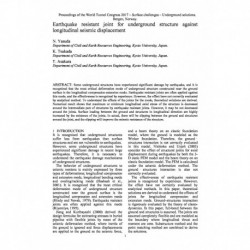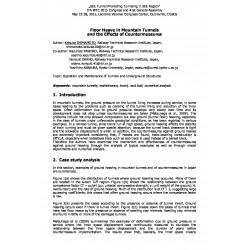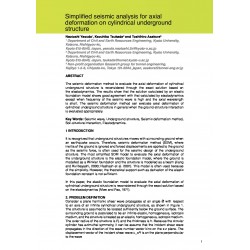No document
Search & filter
Search for a publication
Search & filter
Viewed documents
List of products by author: T. Asakura
-
Earthquake resistant joint for underground structure against longitudinal seismic displacement
Abstract: Some underground structures have experienced significant damage by earthquake, and it is recognized that the most critical deformation mode of underground structure constructed near the ground surface is the longitudinal compression-extension mode. Earthquake resistant joints are often applied against this mode, and the effectiveness is recognized by experience. However, the effect have not...
0,00 € -
Floor Heave in Mountain Tunnels and the Effects of Countermeasures
Abstract: In mountain tunnels, the ground pressure on the tunnel lining increases during service, in some cases leading to the problems such as cracking of the tunnel lining and reduction of the inner space. Often deformation due to ground pressure develops very slowly over time and its development does not stop unless countermeasures are taken (Matsunaga et al., 2009). The problems include not only...
0,00 € -
Simplified seismic analysis for axial deformation on cylindrical underground structure
Abstract: The seismic deformation method to evaluate the axial deformation of cylindrical underground structure is reconsidered through the exact solution based on the elastodynamics. The results show that the solution calculated by an elastic foundation model shows good agreement with that calculated by elastodynamics except when frequency of the seismic wave is high and the axial wavelength is short....
0,00 € -
Stress analysis of cylindrical tunnel with void behind the lining
Abstract: Tunnels in Japan, many of which are constructed by conventional tunnelling methods, often have voids behind the lining, i.e., which often have partial discontinuities between the lining and ground. There are two main reasons why tunnels constructed by the method have voids. One is the supporting member. Not the sprayed concrete but the sheet pile is used as the primary support. Therefore,...
0,00 €





